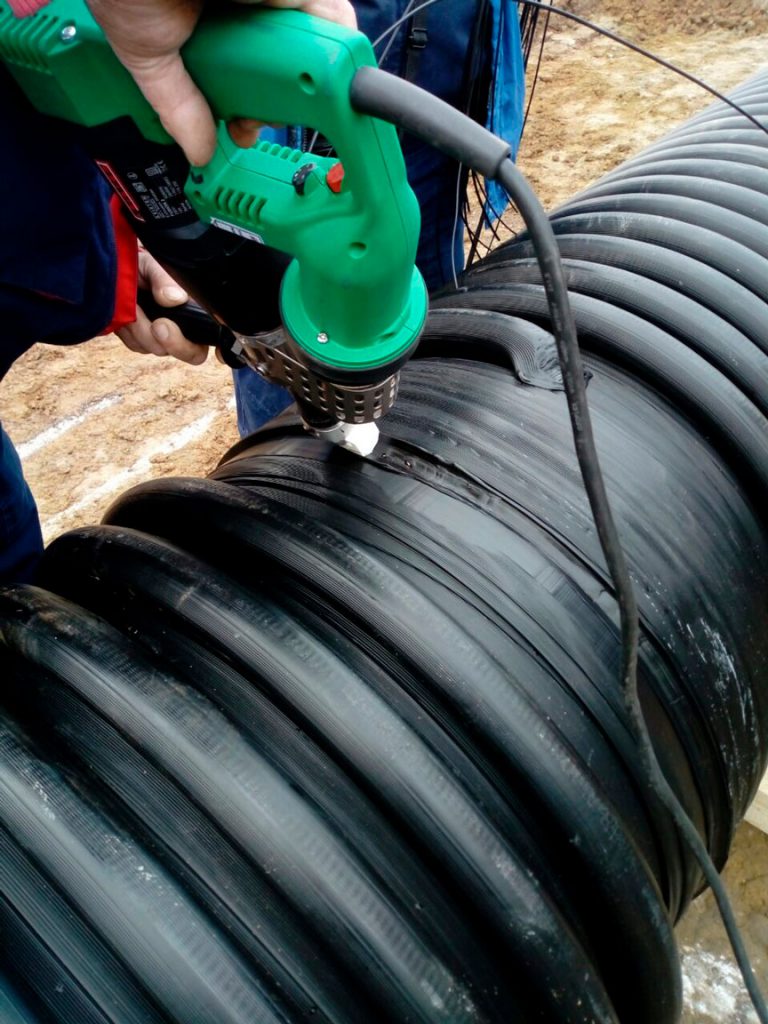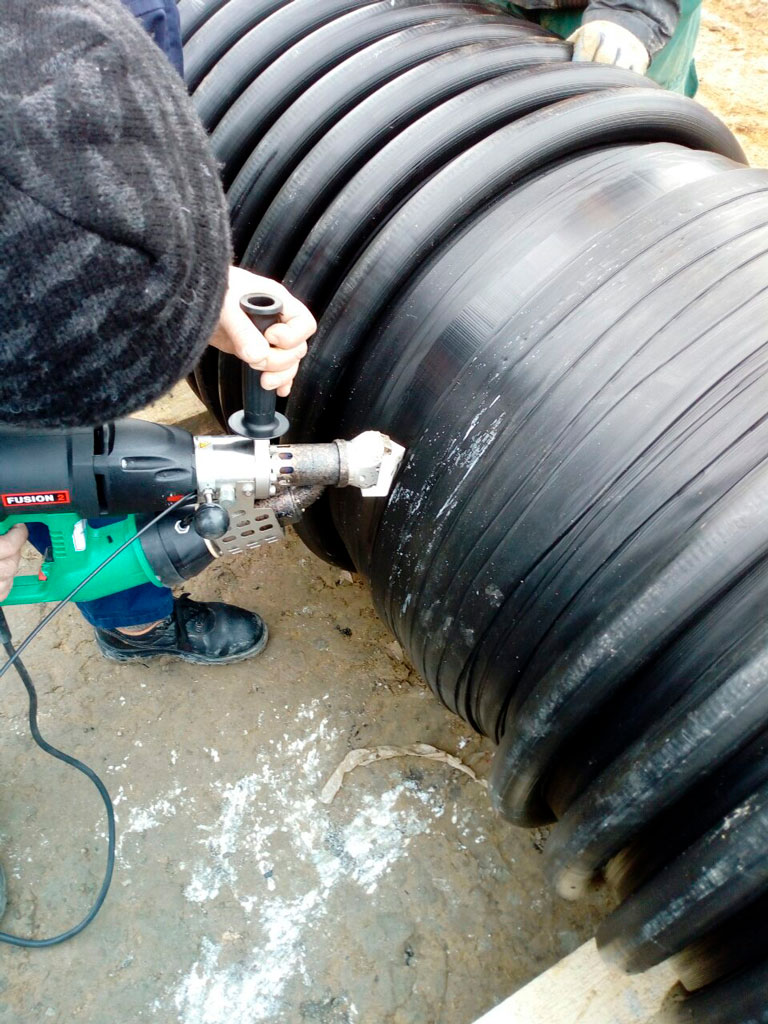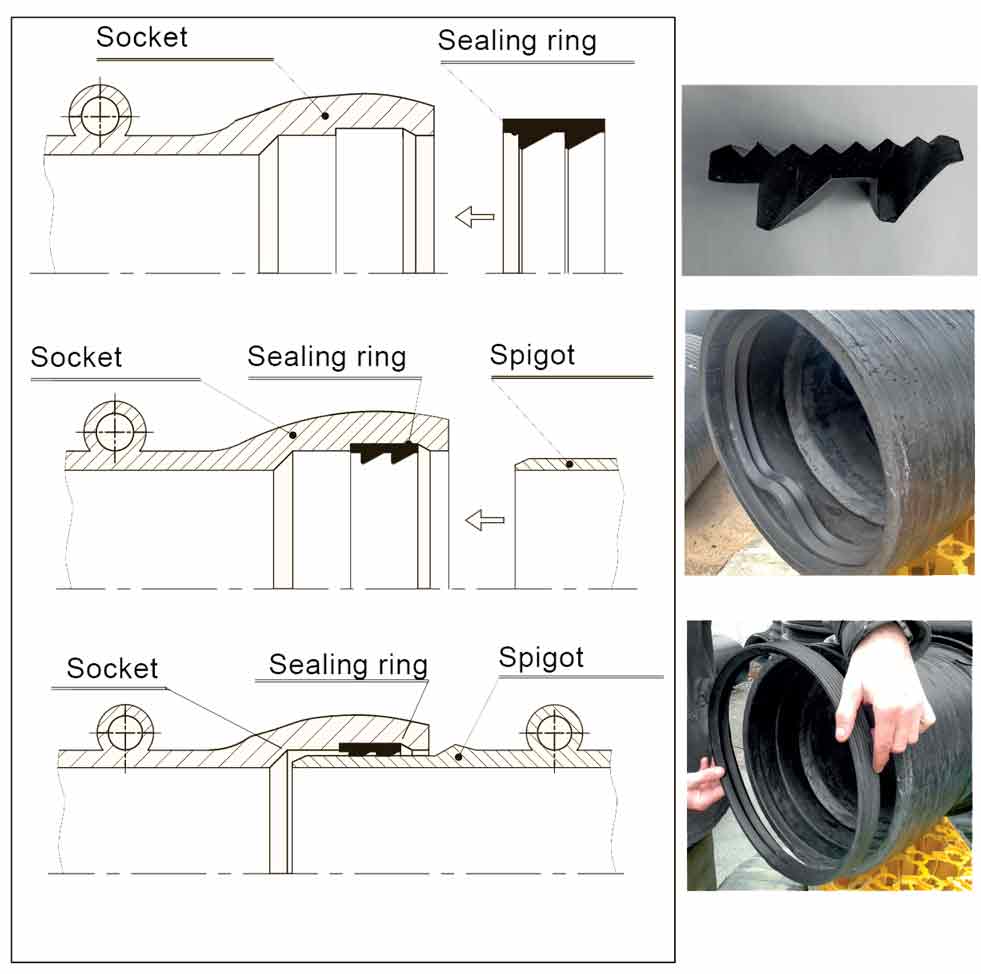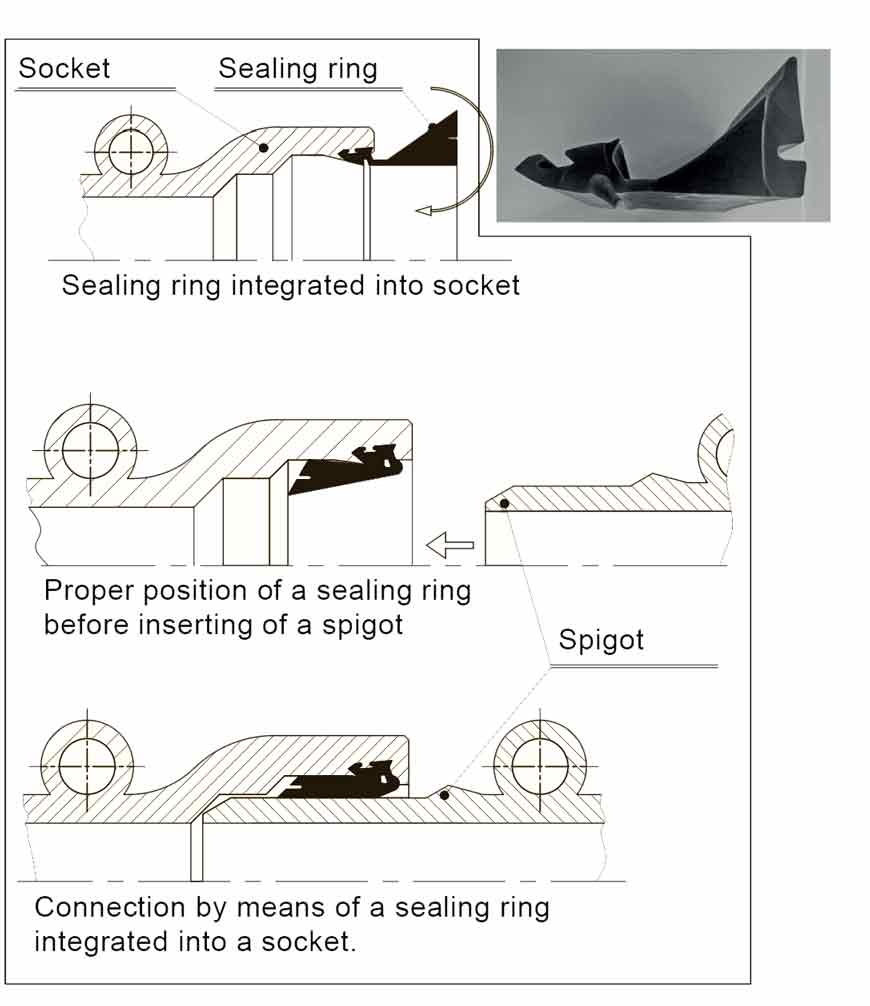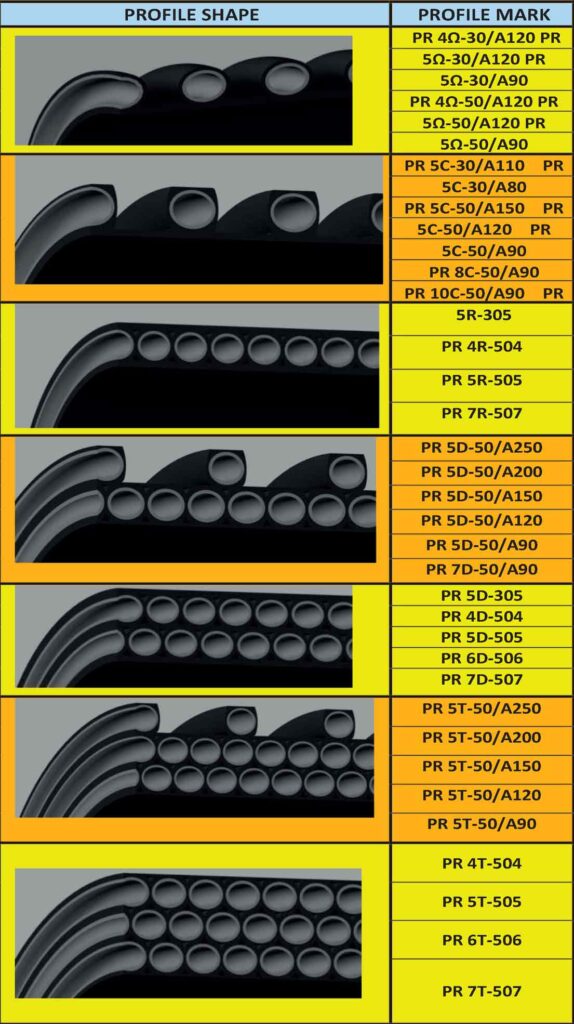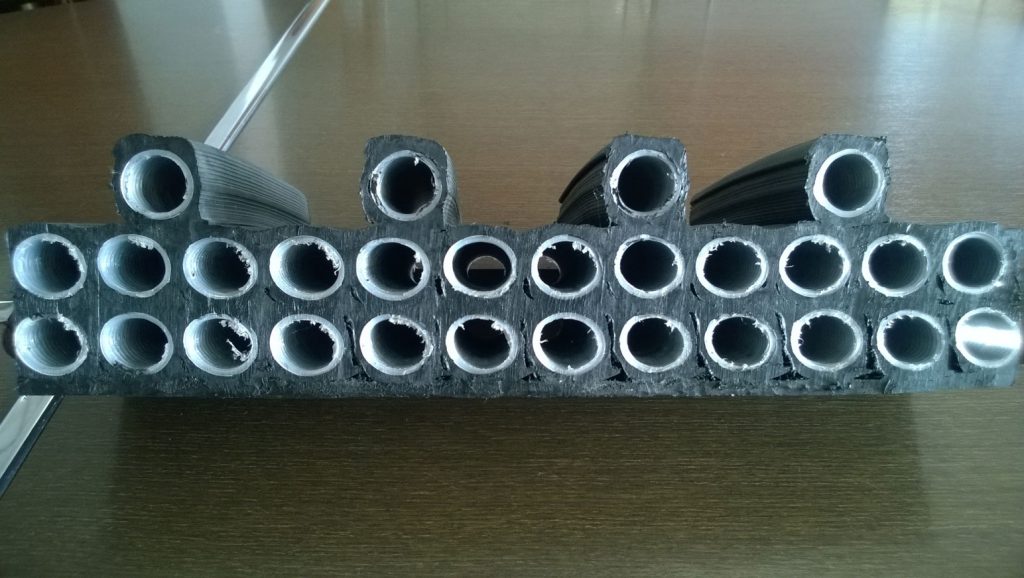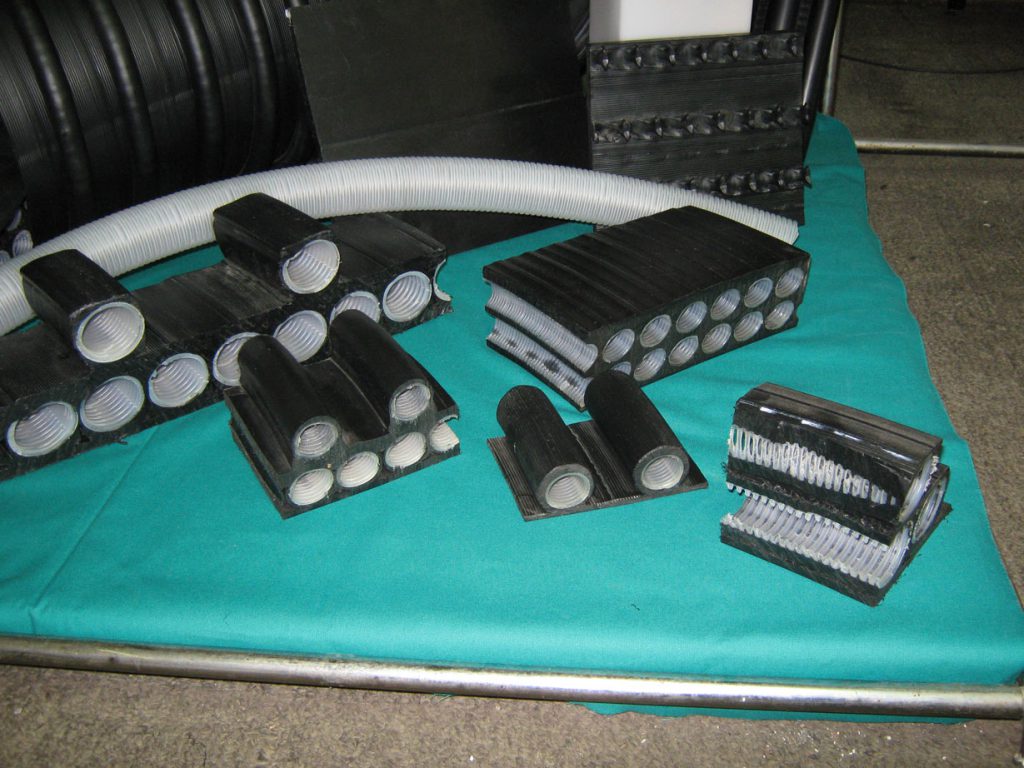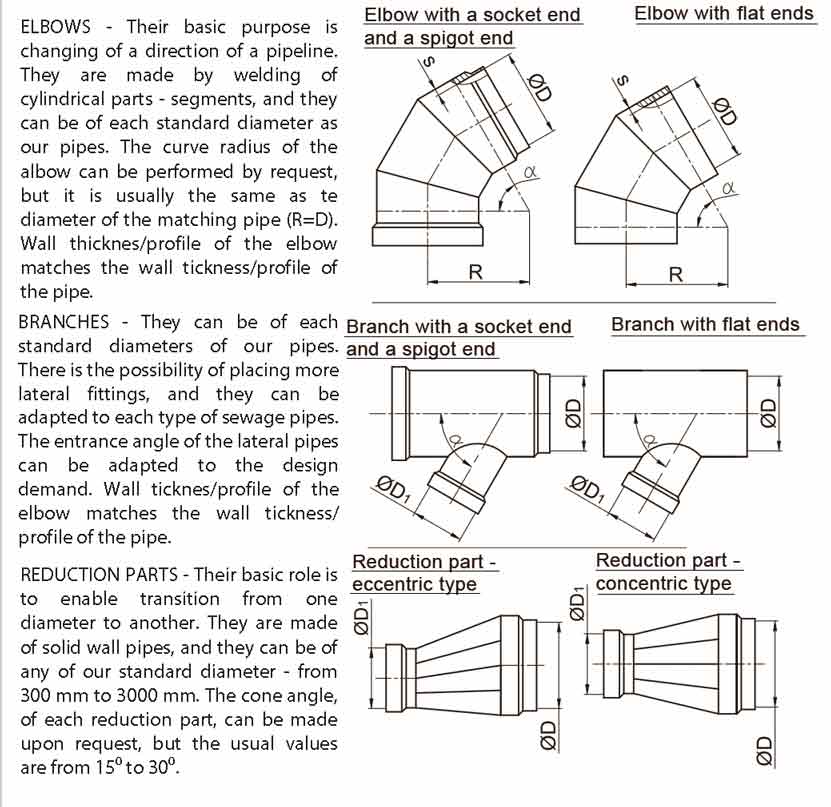Krusik spiral pipes

Tradition and quality
The company has been successfully producing spirally wound pipes for various purposes for many years.
The pipes are produced in the range of nominal dimensions – the inner diameter ID from Ø300 to Ø3000 mm, lengths 6,0 m or 3,0 m (for ID diameters bigger than 2000 mm) – smaller pipe lengths are available upon request.
Regarding the construction shape we produce four types of pipes:
-structured-wall pipes;
-solid-wall pipes;
-combined pipes;
-“anchor-toothed” pipes.
The design and quality of the pipes completely fulfill specific needs of construction of sewage and drain systems, and they do not fall behind the pipes of leading world pipe manufacturers. A special advantage of the spiral winding procedure is a possibility of obtaining the so called combined pipes, which represent a combination of pressurized pipes (a solid-wall pipe) and a pipe intended for underground burial (structured-wall pipe). The basic solid layer (solid wall) withstands the inner pressure load, and the “superstructure” i.e. the outer-layer in form of structured-wall, makes a pipe rigid enough to withstand the soil load (ground load) that acts onto a buried pipe.
The properties and overall quality of Krušik spiral pipes, as well as the prescribed quality control conditions, fulfill the requirements of EN 13476, EN ISO 9969 and DIN 16961 norms, while the pipes installing fulfills the requirements of EN1610 i DIN 4033 norms. Statical calculation of the pipes – load capacity calculation – is carried out in accordance with the German technical norm ATV DVWK A 127, which has been approbated by SRPS CEN TR 1295-2 norm.
The main properties of Krušik spiral pipes are as follows:
- Very low weight related to the overall dimensions (light-weight pipes), so they are quite convenient for handling while loading, unloading, fitting and installation – very good relation between rigidity and flexibility, so that they are able to withstand constant external soil load on occasion of burial, while at the same time they can withstand impact loads carrying long-lasting deformation up to 6%.
- Low roughness of the inner surface and good resistance to abrasion result in good hydraulic flow properties during the lifetime (there is no sedimentation and the flow resistance is very low) so that flow losses are also small.
- Pipe ends, socket and spigot, are designed in such a way as to enable easy inserting of a pipe into another and forming a pipeline, while the connection of the pipes guarantees absolute water-tightness.
Connecting of Krusik-spiral pipes can be carried out in three ways:
By welding two or more pipes of 6 m each, longer pipes are obtained – this can be done before lowering the pipes into the excavated trench.

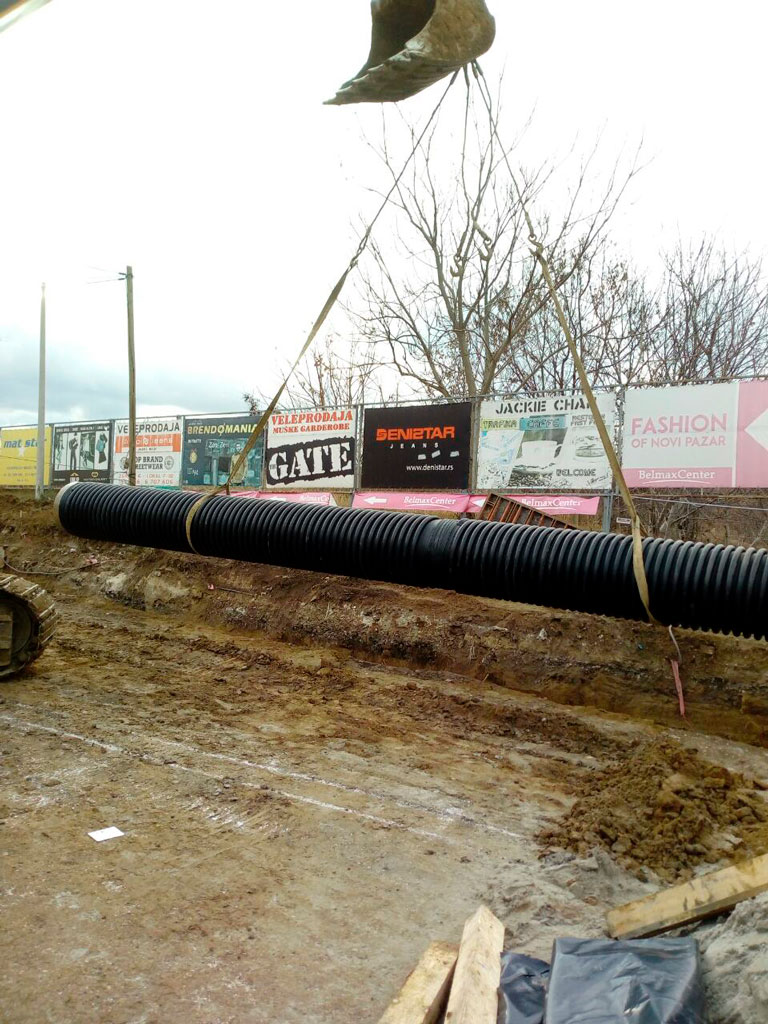
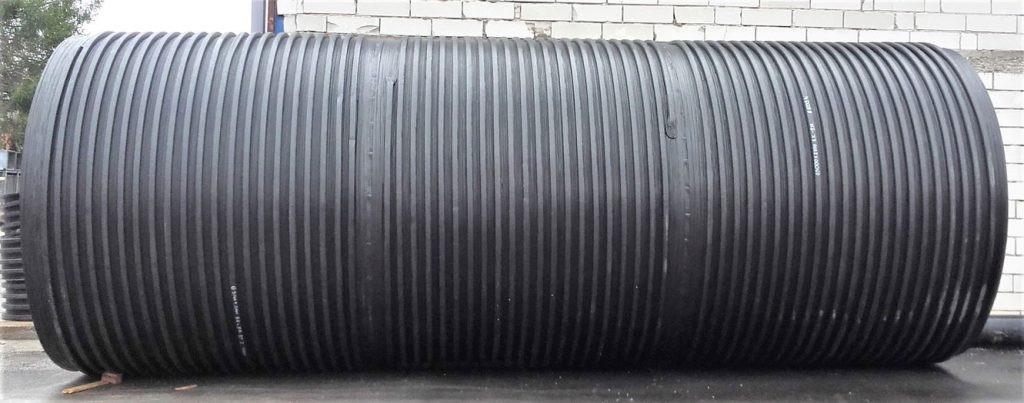
2. Using gaskets made of EPDM rubber

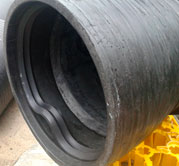
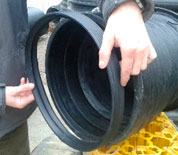
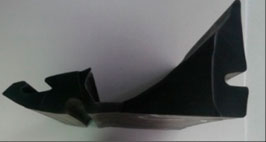
For our pipes we use EPDM gaskets from renowned manufacturers, and along with the delivered pipes and gaskets, it is always possible to deliver the appropriate accompanying certification documentation for the sealing material.
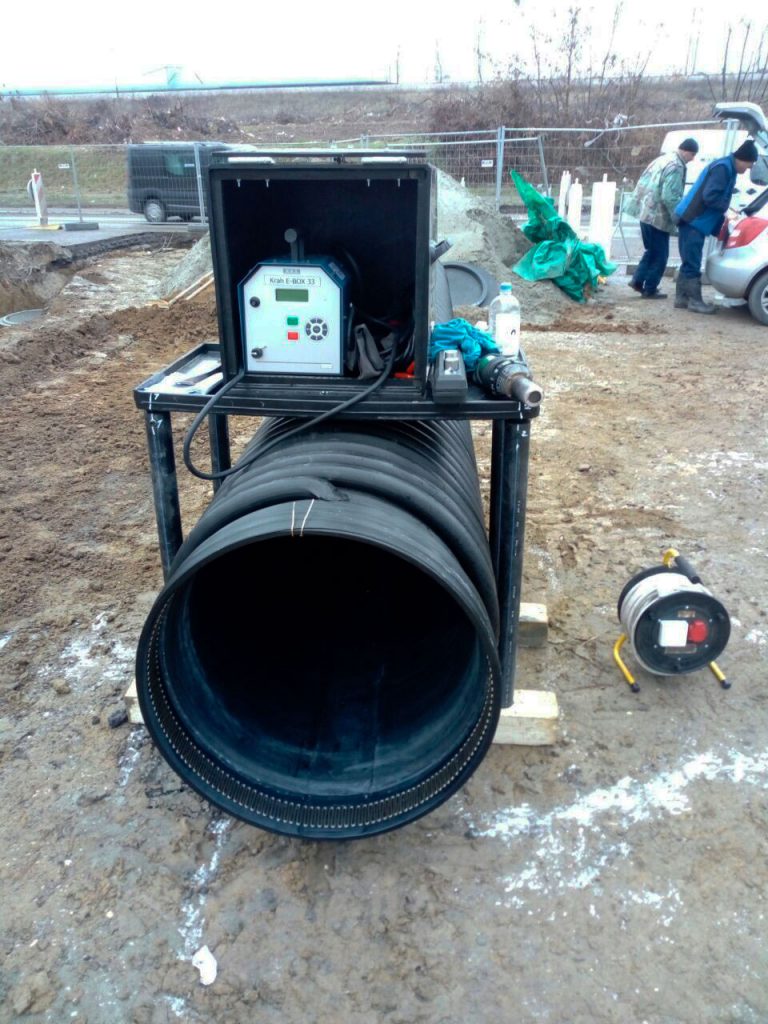
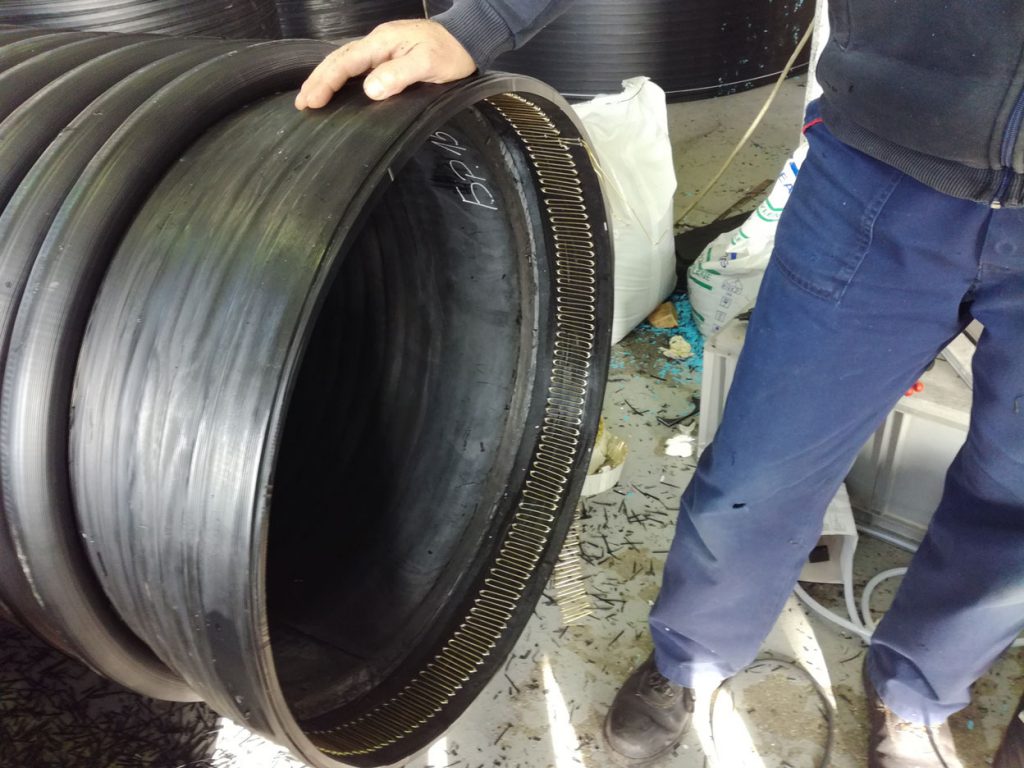
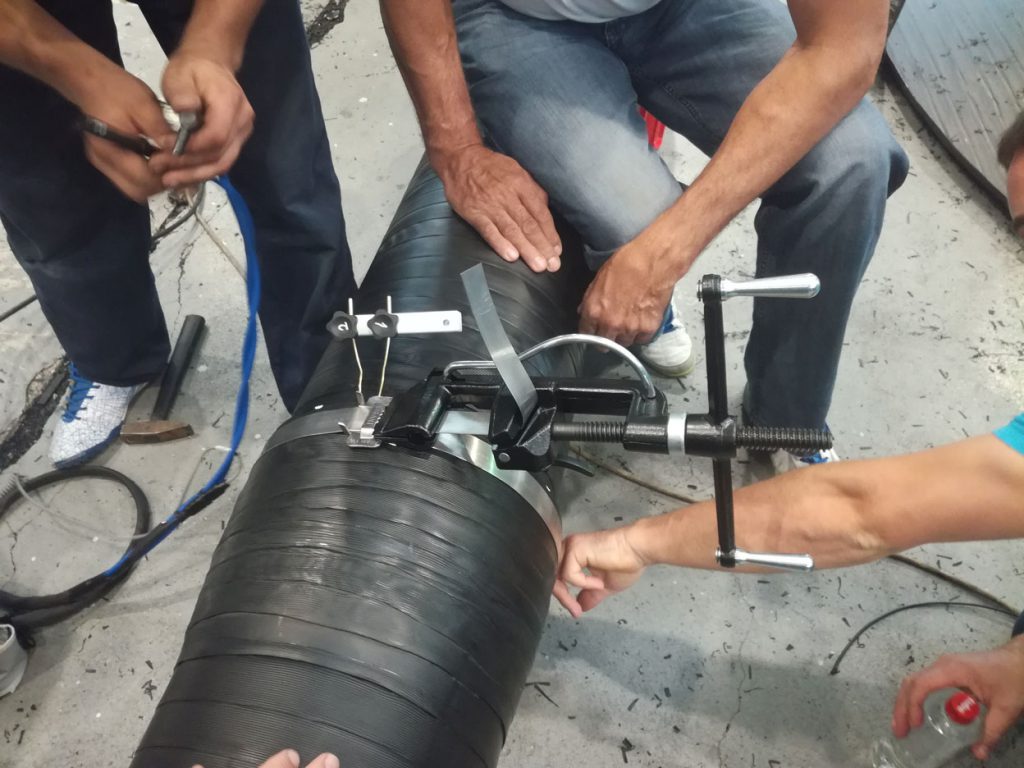
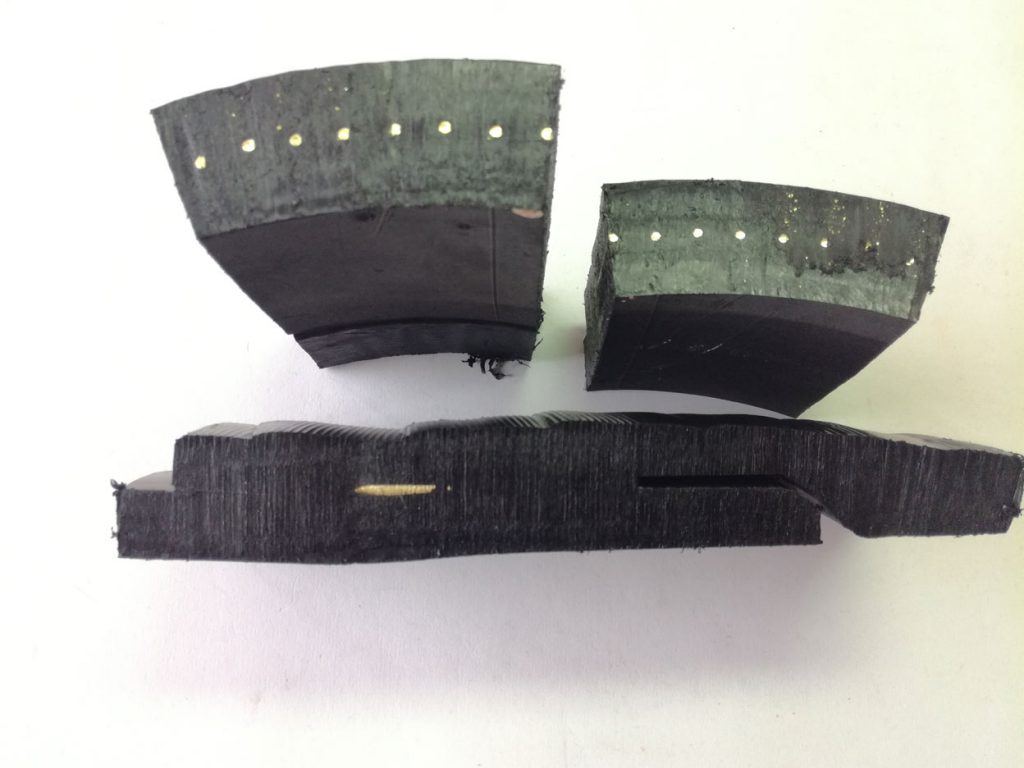
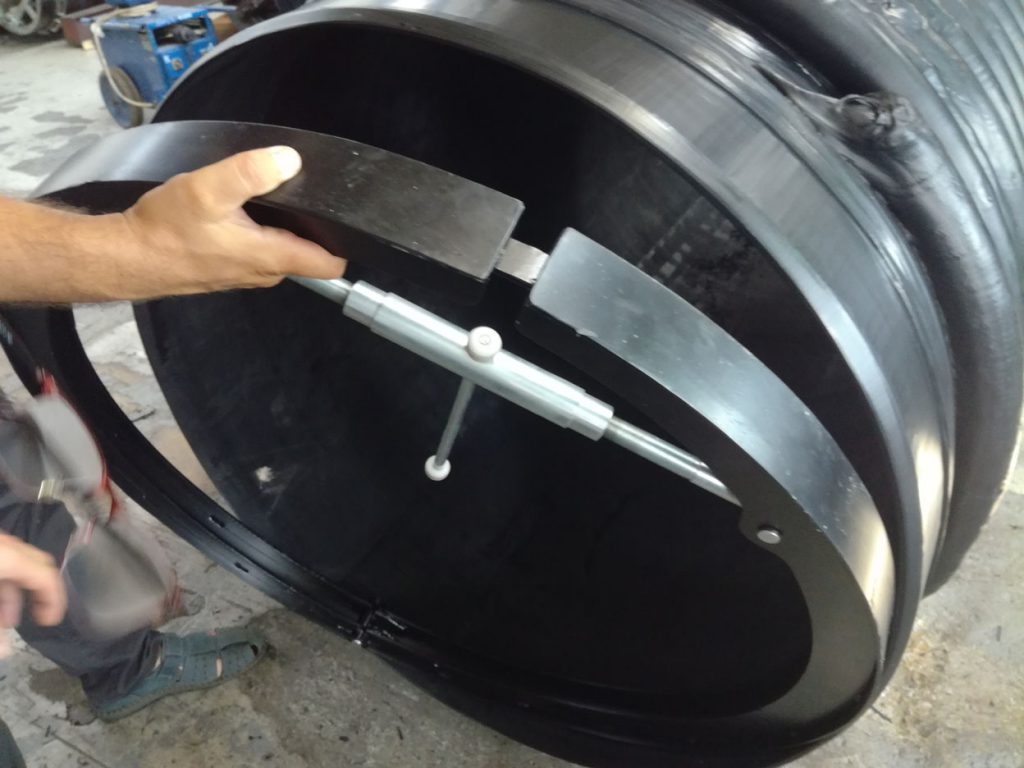
Ring pipe stiffness (S), nominal pipe ring stiffness (SN) and pipe stiffness classes
According to the EN ISO 9969 norm, which is authoritative for the thermoplastics pipes intended for burial, which includes Krušik spiral structured-wall pipes, the main property which defines strength and resistance to impact of external loads is their ring stiffness – SN (nominal stiffness). According to the ring stiffness, the pipes are classified into nominal stiffness classes.
The value of the ring stiffness of the pipe (S) directly depends on the mechanical characteristics of the material from which the pipe is made (modulus of elasticity), as well as on the geometry, i.e. geometric characteristics, the longitudinal section of the pipe wall – the so-called “profile” of the pipe.
According to the EN 476 standard (General requirements for components used for sewage systems), the theoretical value of the ring stiffness of the pipe – S is calculated based on the following formula:
 with:
with:
SN value is determined experimentally – by testing, i.e. by measuring the force which causes deflection of the pipe of 3%. The testing procedure is defined by the above mentioned standard (EN ISO 9969).
On the basis of this experimentally obtained ring stiffness of pipes, according to EN 13476, they are classified into the so-called stiffness classes and are assigned nominal stiffness – SN (kN/m2). If the measured value of pipe stiffness “S” ranges, e.g. between SN4 and SN8, it belongs to class SN4.
The standard shapes of Krušik-Plastik A.D. profiles as well as the corresponding pipe stiffness classes are given in the following tables, and if necessary, we are able to produce pipes with profiles different from those shown in the table.
Fittings
With the aim of enriching the assortment of sewage system components Krušik Plastika a.d. has developed the proper range of accessory elements: manholes, elbows, T-parts, Y-parts, reduction parts as well as other fittings which are completely compliant with the pipes regarding their dimensions and stiffness. These elements are made as individual parts, which means that we have a large flexibility regarding their shapes and dimensions. In that way the accessory elements can be adapted to the specific needs of a customer or a project.






